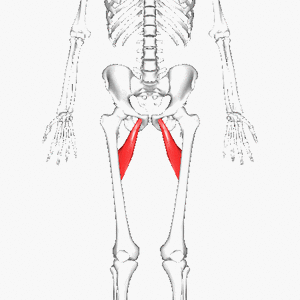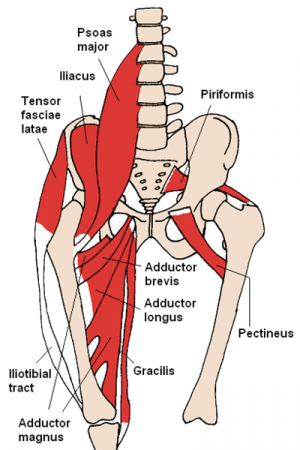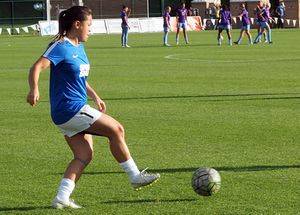Adductor Brevis
Original Editor -
Top Contributors - Lucinda hampton and Kim Jackson
Origin[edit | edit source]
Lateral (outer) surface of inferior ramus of pubis.
Insertion[edit | edit source]
Proximal portion of linea aspera.
Nerve[edit | edit source]
The adductor brevis is innervated by both the anterior and posterior branches of the obturator nerve (L3-4)[1]
Artery[edit | edit source]
Deep femoral artery
Function[edit | edit source]
Hip adduction and Hip flexion. Whether it acts to rotate the femur laterally or medially is dependent on position.
All adductor muscles in the thighs pull the legs toward the middle when walking, in order to maintain balance. Overall they play an important role in balancing the pelvis during standing and walking. This occurs in the closed chain activation. [2]
Clinical relevance- Adductor injury[edit | edit source]
Adductor strain or injury to the adductor muscle group is a common cause of medial leg and groin pain, especially among athletes. It is a common among injury in such sports as eg iceskating, horse riding, soccer, football, karate, running. Sudden changes in direction cause a quick adduction against a large abduction force thereby stressing the tendon, most commonly at its origin. It is caused by a disproportional strain of the muscles, often in combination with a poor warm-up and a lack of stretching.
Risk factors- previous hip or groin injury as well as age, weak adductors, muscle fatigue, decreased range of motion, and inadequate stretching of the adductor muscle complex. Anatomical variances also play a role eg excessive pronation or leg-length discrepancy.
Symptoms - pain extending to the inguinal and knee region when stretching and straining the muscles.[2]
Treatment[edit | edit source]
Adductor injuries are often overlooked. An early assessment is essential to prevent it becoming a career threatening injury for an athlete.
For a guide to Physiotherapy treatment and assessment see Groin Strain Adductor Tendinopathy
It is essential to do a thorough assessment of the pelvis and core as well as the thigh muscles. Designing a strengthening program to address which muscles are weak and which muscles are tight is vital. Treatment should include strengthening of the muscles around pelvis and core, along side with stretches to be completed following all training sessions. [3]
Resources[edit | edit source]
- ↑ Wikipedia Adductor Brevis. https://en.wikipedia.org/wiki/Adductor_brevis_muscle (last accessed 28.4.2019)
- ↑ 2.0 2.1 Kiel J, Kaiser K. Adductor Strain. Available from: https://www.ncbi.nlm.nih.gov/books/NBK493166/ (last accessed 28.4.2019)
- ↑ Khandekar P. Assessment and management of adductor strain. Saudi J Sports Med 2017;17:118-20. Available from: http://www.sjosm.org/text.asp?2017/17/2/118/207576 (last accessed 28.4.2019)









